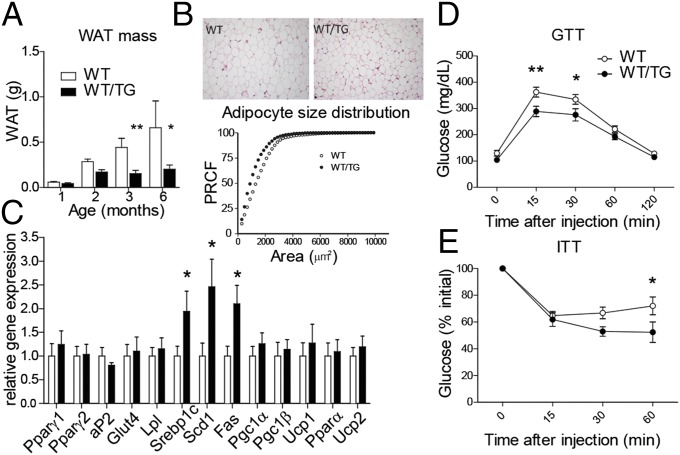Fig. 2.
Overexpression of Dlk1 limits accumulation of WAT, with no evidence for failure of adipogenesis, and improves glucose tolerance and whole-body insulin sensitivity. (A) Abdominal WAT accumulation in female mice from 1–6 mo of age 70B mice and WT littermates (n > 3 per time per genotype), P < 0.001 overall by one-way ANOVA, and at each time point by Bonferroni’s multiple comparison post hoc test, *P < 0.05, **P < 0.01. (B, Upper) Representative H&E staining of epididymal WAT from 26-wk-old mice. (Lower) Percent relative cumulative frequency (PRCF) analysis (PCRF, n = 4 mice per genotype). (C) RT-qPCR of WAT genes from abdominal WAT at 6 mo (data from 70B free-fed male mice), normalized to reference gene expression and then presented relative to WT = 1.0. WT and WT/TG, *P < 0.05 by Mann–Whitney U test, n = 6 per genotype, *P < 0.05. Glucose tolerance test (GTT) (D) and insulin tolerance test (ITT) (E) on 6-mo-old male mice from the 70B line. *P < 0.05 and **P < 0.01 by one-way ANOVA with Bonferroni’s post hoc test; WT, n = 13; WT/TG, n = 8. Values are mean ± SEM.

